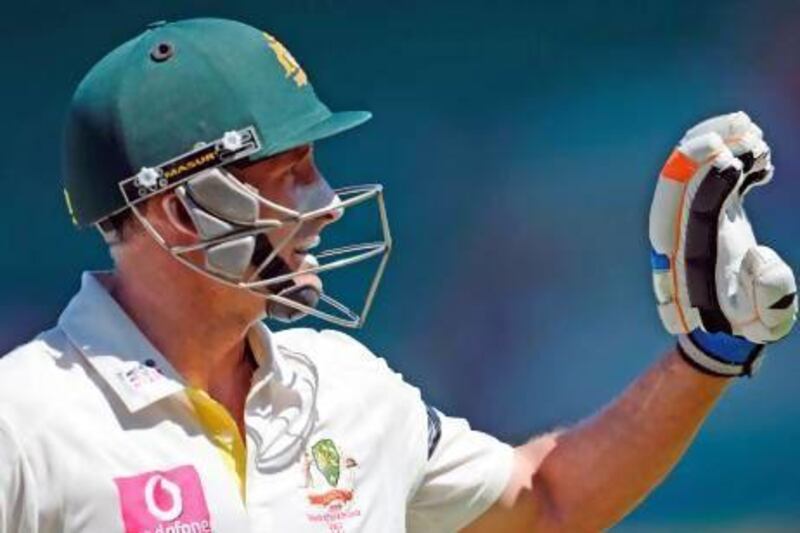During the last Australian summer, as a feted generation of India batsmen failed repeatedly, the question being asked was: "When?"
Rahul Dravid and VVS Laxman did not answer immediately, but Adelaide would be the last Test that either would play. And if Sachin Tendulkar's recent retirement from one-day international cricket is any guide, there will not be too many additions to his 194 Test caps.
This afternoon in Sydney, no one was asking "When" or "Why not". Instead, even as Ed Cowan and Michael Clarke batted their way towards the target, chants of "Hussey, Hussey" rang out across the storied old ground.
It may not have matched the emotion of Steve Waugh's farewell nine years earlier, but there was no doubt about the affection and esteem with which fans regarded him.
It helped too that Michael Hussey's exit was so well timed. He finished with two centuries against South Africa, the best team in the world, and another against Sri Lanka, a side he averaged more than 100 against.
When he came to the crease with Australia stuttering in pursuit of a small target, he played with the briskness and purpose that had typified his batting at its best. There was even a reverse-swept four to illustrate just how adept he was at every format of the game.
Hussey is not alone among Australia batsmen in having chosen his exit well. Ricky Ponting may have gone out on a disappointing note – failing with the bat in a heavy defeat against South Africa in Perth – but most of the greats that preceded him went while still near the top of their games.
Neil Harvey was another left-hander who started his career in Bradman-esque fashion. When he retired 50 years ago in Sydney, he too had played 79 Tests like Hussey, while scoring 21 hundreds to Hussey's 19. He made 22 and 28 in that game, but in the previous one, there was an innings of 154 that had glimpses of the prodigy who had made his debut just as Bradman was coming to the end of his career.
The Chappells carried the standard for Australian cricket in the 1970s. Ian, who had handed over the captaincy to Greg by then, bowed out with 75 and 26 not out, with his brother alongside him as the winning runs were hit in a 3-0 Ashes whitewash in 1980.
That was at the Melbourne Cricket Ground. Greg went four years later, in Sydney, with a doughty innings of 182 anchoring victory against Pakistan. There was no such victorious departure for either Allan Border or Mark Taylor. For Border, the last innings was at Kingsmead in Durban, at the end of a drawn series against South Africa.
Taylor made two and two at the SCG against England, but left with the satisfaction of having masterminded another Ashes victory (3-1).
Waugh, who succeeded him, left to the strains of John Williamson's True Blue and thousands of red rags being waved in his honour. India batted his team into submission at the SCG, but innings of 40 and 80 ensured the man who epitomised Australian cricket's latest golden age did not leave on a losing note.
Hussey averaged 51.52 in Tests, 48.15 in ODIs and an astonishing 37.94 in Twenty20 internationals. Having led the team's victory song, Under the Southern Cross, for the past few years, he picked Nathan Lyon, the off-spinner, as his successor.
"I picked Nathan because I think he's a man of great character," he said. "I think he plays the game for the right reasons, I think he understands and respects the fabric of the baggy green cap, and that's what I want to come through from him when he leads the team songs in the future."
Few understood the value of that cap more than the man who had to wait until he was past 30 to get his.
Follow us
[ @SprtNationalUAE ]





